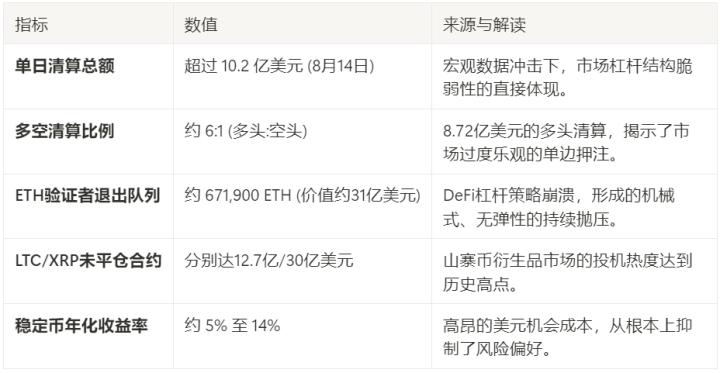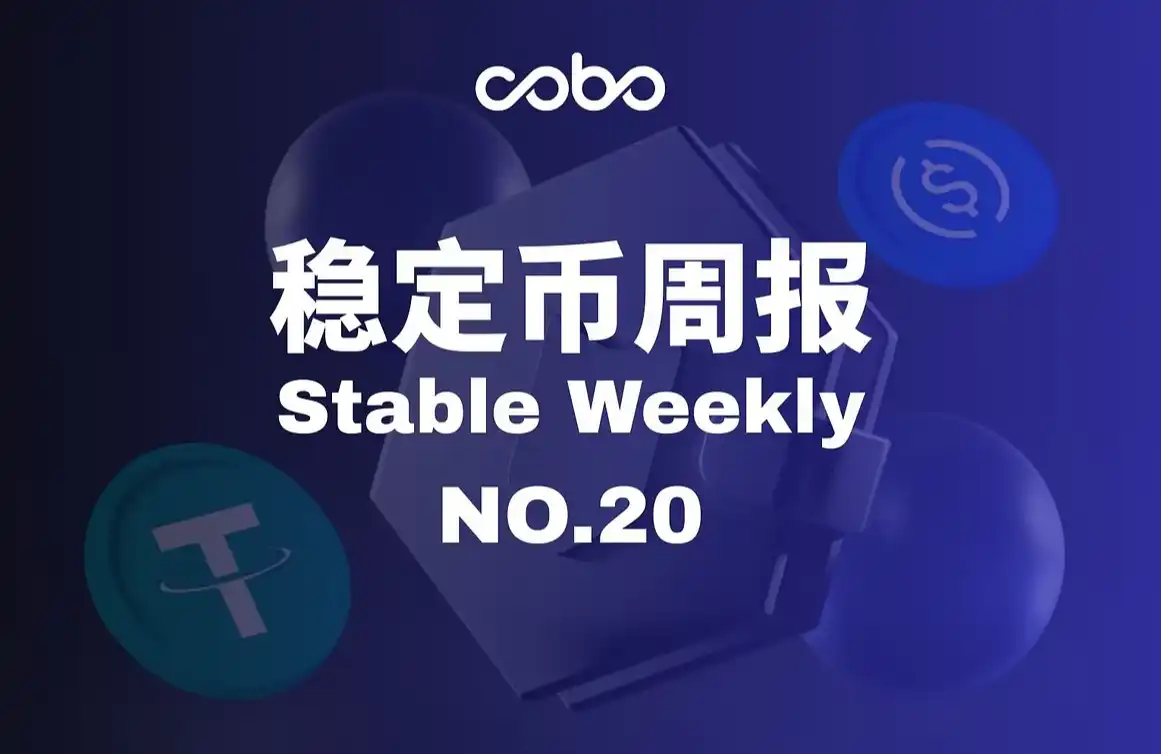Written by: Jiayi
I firmly believe that this crypto cycle is driven by U.S. government policies.
Just last week, Trump signed an executive order about 401(k) retirement fund investments, allowing part of retirement funds to be invested in private equity, real estate, and even digital assets. Looking back in the timeline: a few weeks ago, the GENIUS bill was officially passed, clearing the regulatory path for stablecoins; this month, the SEC also changed its attitude, loudly declaring to do "Crypto Everything". From stablecoins to DeFi, from on-chain identity to tokenized assets, almost every area is being reintegrated into the U.S. regulatory system.
This is not a minor adjustment, but a redirection of capital structure. The United States is doing one thing: incorporating Crypto into the dollar system as the financial growth engine for the next phase.
Today, let's discuss what the U.S. government wants to do, which tracks crypto enthusiasts should pay more attention to, and how to maximize benefits.
[The rest of the translation follows the same professional and accurate approach, maintaining the original meaning while translating into clear English.]From an investment perspective, these returns are not low, and they offer stability, safety, and liquidity, which are far more practical than leaving funds in an exchange. Especially for cross-border users, storing stablecoins not only earns interest but also helps avoid exchange rate fluctuations and traditional channel complexities.
To summarize my judgment: This policy is clearing the runway for stable and compliant stablecoins. In the short term, US dollar stablecoins and their payment applications will see capital inflow; in the long term, they will become the ballast stone of on-chain finance and the core bridge of fiat currency digitization.
Stablecoins as an entry point, accelerating the development of on-chain basic economic infrastructure
The clarification of US regulation is actually paving the way for a localized financial economy. The so-called "localization" fundamentally means that compliant public chains and protocols will carry more business from US institutions, and traditional finance will more actively integrate into these underlying chains, using them as new infrastructure, which is the second track I value.
The most intuitive example is Base, which, relying on Coinbase's compliance advantages and seamless integration with exchanges, has successfully carried more and more on-chain business from US institutions and enterprises, connecting multiple tracks such as payment, applications, and asset circulation. In this trend, I am optimistic about Base's ecosystem expansion. Besides issuing tokenized securities, it is filling applications with partners, such as collaborating with Stripe on on-chain stablecoin payments, making Base the hub of payment innovation; it also provides underlying settlement infrastructure for PayPal, JPMorgan, and others.
In the future, US payment companies, banks, and brokerages will obviously prefer to choose this local, communicable network that can be quickly addressed when issues arise, rather than using an overseas anonymous chain. Localization is essentially a compliance moat.
Base itself does not issue a token; its traffic, value, and imagination are realized through the only blood vessel of B3. B3 is built on Base, with founding teams from Coinbase. B3 inherits Base's compliance system synchronization and user economic entry advantages, which means that whether it's US dollar stablecoin payments, institutional settlements, or compliance narratives for entering the North American market, B3 has an unparalleled first-mover advantage. Such on-chain financial infrastructure, after connecting scenario-based and personalized closed loops, will have huge attraction for high-quality assets wanting to go on-chain or operate efficiently on-chain. When Base ushers in large-scale application explosion, B3 will become the first choice for direct landing and scaled operation of these applications, truly a super application接承层 and on-chain economic entry point.
Additionally, I am quite familiar with the B3 team, who are steady in their work, continuously expanding externally while refining their product. I'll keep some details under wraps for now. What can be confirmed is that after the upcoming heavyweight cooperation is announced, B3's position in the industry will be clearer.
Looking ahead, I don't think this is an isolated case. As regulations continue to improve, more traditional giants will follow JPMorgan and Coinbase's path. We might see many large banks issuing on-chain bonds, insurance companies managing policies on-chain, tech giants issuing enterprise stablecoins for internal settlement... After all, every major client is a stable cash flow source for on-chain infrastructure.
Of course, this will also raise requirements: performance must withstand massive transactions, privacy must protect enterprise data, and compliance must have auditing and risk control built into the system. Simply put, this wave of US policy is pushing on-chain infrastructure from past "international wild growth" to "localized fine cultivation". This upgrade will benefit local compliant chains and modular innovative networks the most.
ZK: Privacy New Infrastructure in Policy Perspective
Which tracks once declared "dead" might welcome their second day? Take ZK, for example.
On August 13th, OKB's surge ignited Twitter and various communities. The token price rose from 46 to nearly 120, almost tripling. This surge was not only due to OKX's one-time destruction of 65.25 million historical repurchased and reserved OKB, clearing potential past selling pressure. The X Layer upgrade also superimposed structural changes in supply and demand, with OKB becoming the sole Gas Token for X Layer, comprehensively diverting traffic from wallets, exchanges, and payment scenarios.
Supply contraction + demand concentration made the market instantly realize that OKB's scarcity and use value were simultaneously amplified, resulting in capital rush and emotional resonance short-term impact. Another trading variable is compliance expectations. The market has been tracking "OKX is preparing to go public in the US", thus holding imagination space for opening the US market, though whether it can land depends on US regulatory policies.
My attitude towards this sector is clear: no FOMO, maintain observation. ZK may find its resurrection opportunity in the compliance era, or it might just be a brief comeback. But in any case, its movement is worth watching.
The latest US digital asset report clearly states that individuals should be allowed to conduct private transactions on public blockchains and encourages self-custody and privacy-enhancing technologies to reduce on-chain data leakage risks. The White House's 2025 digital asset policy report also mentions ZK as a key path to balancing privacy and compliance. This attitude shift is interesting; previously, privacy coins and mixers were on the regulatory "blacklist". Now, decision-makers actually acknowledge: to bring more traditional funds on-chain, the "on-chain privacy" shortcoming must be made up, and ZK is the ready-made solution.
On the enterprise application side, Google Wallet has launched a ZK-based age verification from Succinct Labs: you can prove you're over 18 without exposing any ID details. It sounds very Web2 - both KYC compliant and privacy-protecting, but this time it's running on-chain.
Succinct, behind this, has thus been pushed to the forefront. Its token $PROVE performed relatively well after listing compared to recent projects, outperforming many Altcoins in the recent market. This case demonstrates one thing: when top tech companies and real business scenarios start using ZK, market patience will also return.
I understand ZK's revival is not just an emotional rebound, but an inevitable demand in the compliance era. After assets and transactions move on-chain, enterprises cannot accept all business details being exposed to competitors, and individuals are unwilling to have their financial trajectories become transparent streams.
Yet regulatory requirements are clear. What should be audited must be auditable, and what should be traceable must be traceable. This seemingly contradictory demand is precisely ZK's stage: "First prove legality, then hide details". For instance, in inter-bank large-amount settlements, ZK can verify transactions comply with anti-money laundering regulations without revealing customer identities. Such scenarios will become increasingly common: identity verification, credit scoring... all could be reshaped by ZK. Many high-quality ZK projects haven't issued tokens yet, but policy windows might accelerate their landing.
In the last cycle, top ZK teams continuously raised funds, but many secondary performances were "from peak to valley", cooling ZK track's heat to freezing point. In this round, is there a chance to reverse the impression of "ZK secondary must die"?
I suggest focusing on two types of targets: one, teams with unreleased tokens but strong technical reserves and landing capabilities; another, projects that have issued tokens with healthy chip structures and substantive business progress. For me, this sector is worth observing short-term, though not yet at a stage of blind heavy positions, but not ruling out the emergence of a few winners riding the trend.
Policy Finalized, New Pattern Begins
As a long-term track investor, I'm very clear: once the regulatory shoe drops, market structural opportunities begin to reshuffle. This round of US policy clarification is substantially changing capital flow and industry order.
In the short term, compliance-driven capital inflows and long sentiment have already allowed some sectors to outperform the market, with stablecoin issuers and market capitalization tokenization providing direct market feedback through price and trading volume. This is just the first wave of capital exploration. More importantly, it is about reshaping the long-term landscape. When rules are clear and thresholds are defined, truly valuable tracks will settle down. Conversely, pseudo-concepts that are detached from real-world needs and built solely on speculative gaming will have less survival space under strict regulation, and industry resources will flow towards more meaningful directions.
I firmly believe that: the real opportunity is to adapt to structural changes: in the short term, look at policies and capital flows to find entry points; in the long term, observe which tracks can synchronize with future financial and technological developments. I see this round as the "fourth stage moment of the internet" in the crypto industry. Those interested can check my previous article on the development path of the web3 industry: just like the internet had rule establishment and technological revolution, with short-term pain, but ultimately ushering in a larger and healthier ecosystem.
The current crypto industry is bidding farewell to the era of disorderly growth and moving towards a mature period with clear rules. Those who can seize policy dividends in this window period and layout will have a better chance of establishing a position in the next stage's landscape.
The new route has been laid out, and those who sail with the wind will reach the future faster.







